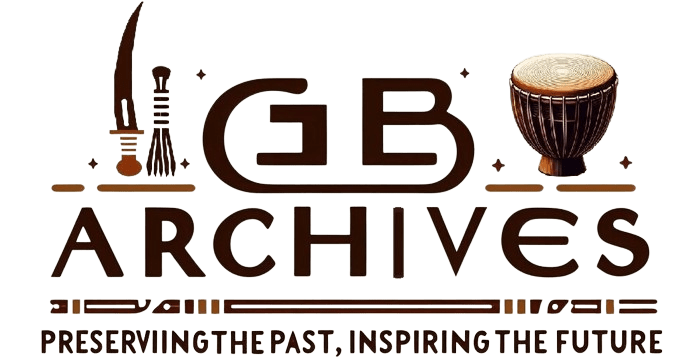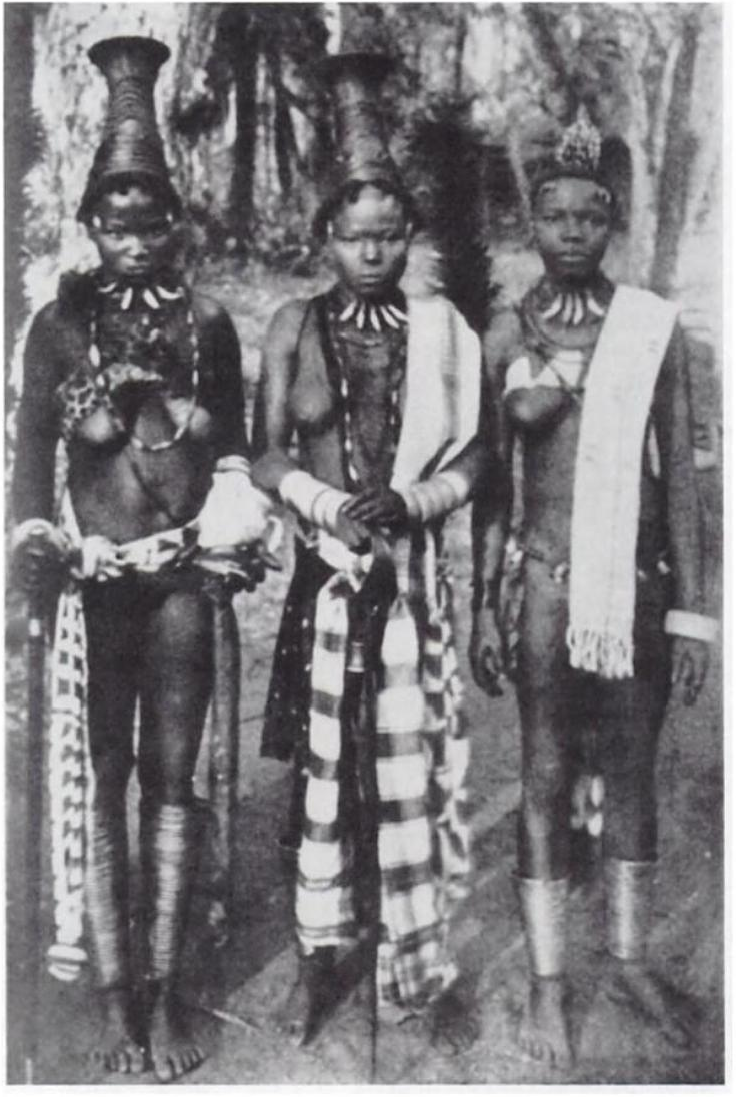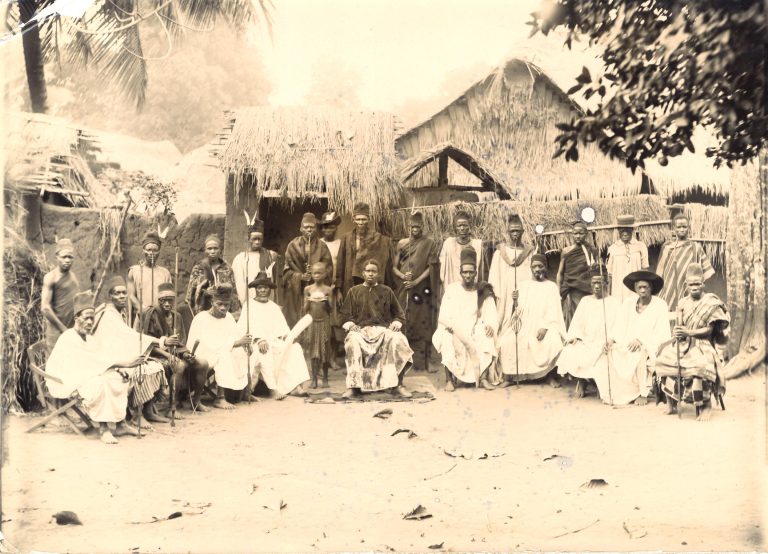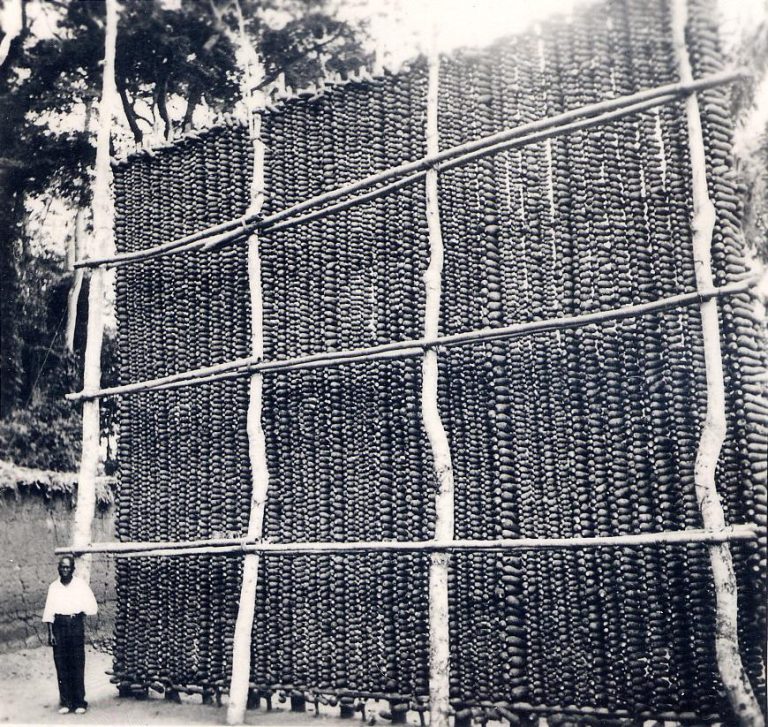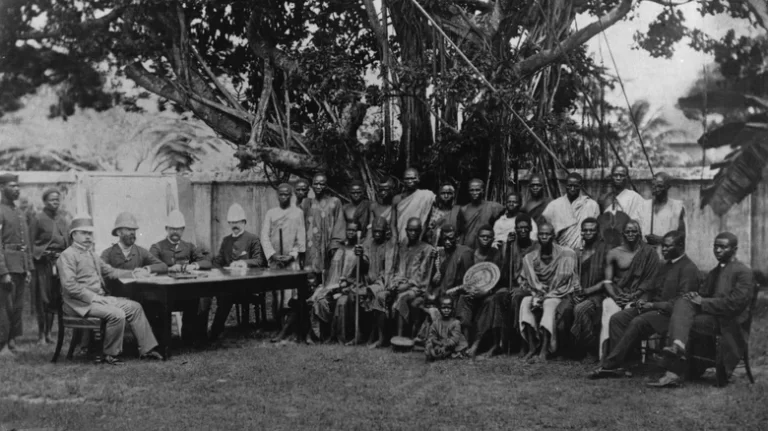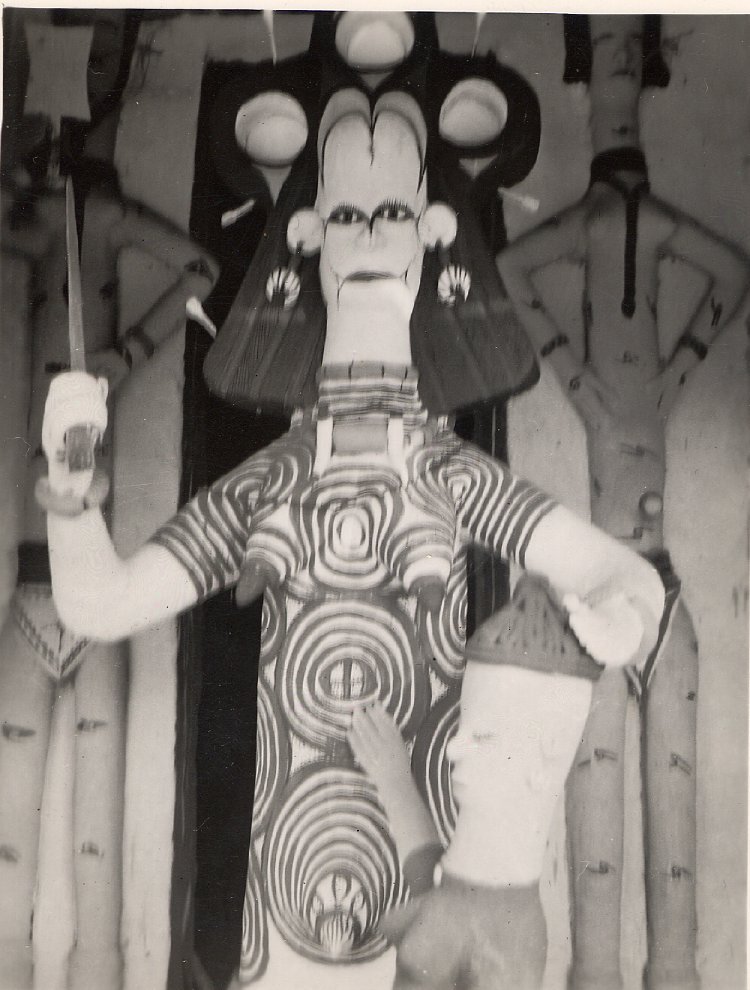Uli, or Uri as it is known in some Igbo dialects, signifies one of the most ancient and visually captivating art forms in Igbo culture. Predominantly practiced by Igbo women, Uli designs were created using plant-based pigments. They were applied to the body and the walls of houses as symbols of identity, beauty, spirituality, and cultural heritage. The Uli tradition has been passed down from generation to generation. It is renowned for its intricate patterns and spontaneous designs. These designs mirror the creativity and craftsmanship of Igbo artists.
This post explores the rich history of Uli, its cultural and social significance, the techniques used in both body and mural decoration, and its continued relevance in contemporary art and culture.
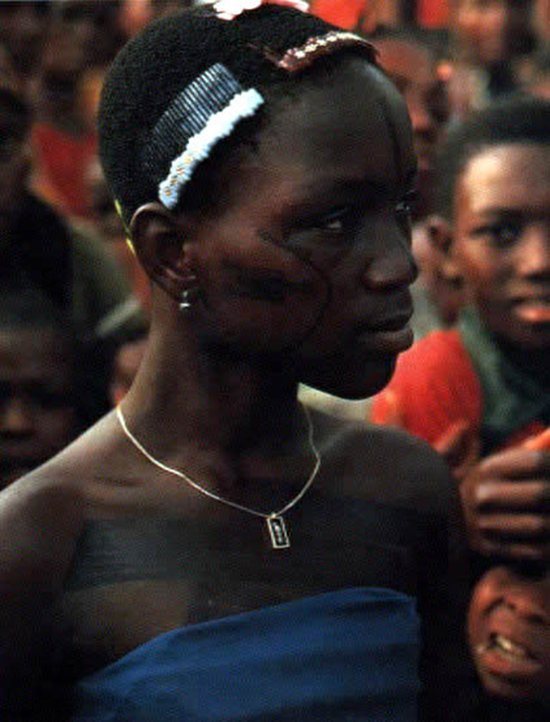
Shared under a Creative Commons Attribution-NonCommercial-ShareAlike 4.0 International (CC BY-NC-SA 4.0) license.
This image shows a young Igbo girl adorned with intricate Uli body art. The designs are elaborate, covering her arms, chest, and face. The photograph, taken by Liz Willis in 1983, captures the beauty and cultural significance of Uli body painting. It highlights the skill and creativity involved in this traditional art form.
Historical Background of Uli
The history of Uli as a decorative practice dates back hundreds of years, with early examples of similar motifs found in Igbo-Ukwu bronzes and pottery from as early as the 9th century CE. These designs became more sophisticated over time, and by the late 19th and early 20th centuries, Uli had developed into a significant artistic tradition, particularly in southeastern Nigeria.
Historically, Uli was not just decorative but served as a medium for communicating social and spiritual messages. The motifs, often abstract, symbolized ideas related to fertility, wealth, morality, and community roles. In many Igbo communities, Uli painting was an essential part of rites of passage, festivals, and celebrations.
Uli artists, traditionally women, were revered in their communities for their talent and spiritual connection. The patterns they created were believed to have a protective quality. Specific designs were meant to invoke the blessings of deities, particularly Ala, the earth goddess.

Shared under a Creative Commons Attribution-NonCommercial-ShareAlike 4.0 International (CC BY-NC-SA 4.0) license.
This black and white photograph shows a young girl adorned with traditional body art. The woman’s skin is painted with Uli patterns. She is wearing a headpiece with feathers and other decorative elements. Her back is turned towards the camera, showing the designs on her skin more prominently. The blurred figures in the background suggest that this photo was taken at a public event. This image showcases the Igbo traditional art form of Uli. This art form holds significance in terms of identity and aesthetics within this community.
Materials and Techniques
Uli artists primarily used dyes extracted from local plants. The uli plant (Combretum paniculatum) is a climbing shrub whose seeds were ground and mixed with water to produce a dark, bluish-black pigment. This dye was applied using fine brushes made from animal hair or the fibrous ends of palm fronds.
On the body, Uli was often used to adorn both men and women. This can be in preparation for important social events. The patterns were usually temporary, lasting a few days before fading. Uli body art typically focused on parts of the body that were visible, like the arms, chest, back, and face.
Design Characteristics of Uli
The beauty of Uli lies in its spontaneity and fluidity. Unlike many other traditional art forms, Uli designs were rarely pre-planned or sketched beforehand. Instead, artists worked directly on the canvas of the human body or house walls, allowing for greater freedom of expression.
Uli patterns are often abstract, with a strong emphasis on lines, curves, and geometric shapes like spirals, circles, and squares. Some of the most common motifs include representations of flora and fauna, celestial objects like the sun and stars, and symbols related to fertility and the earth. There is also significant use of dots, lines, and zigzag patterns.
The designs were applied in an almost rhythmic motion, reflecting the artist’s skill and the symbolic meanings behind each pattern. Many Uli motifs have deep cultural or spiritual significance, like the udu (pot), which symbolizes wealth and the sustenance of life, or the oge (sun), which signifies continuity and the passage of time.
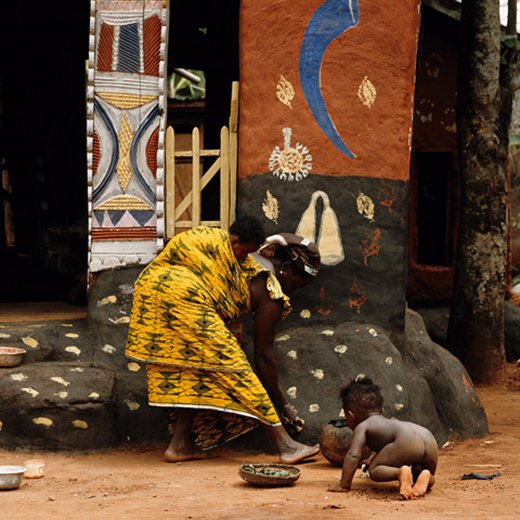
Shared under a Creative Commons Attribution-NonCommercial-ShareAlike 4.0 International (CC BY-NC-SA 4.0) license.
This image captures a woman in a yellow wrapper, crouched down while applying decorations to the exterior wall of a house. The wall features various geometric and abstract designs in multiple colors. In front of her is a bowl containing Uli dye used for the decoration process. A small child is also there in the foreground, seemingly engaged with something on the ground.
Uli in Murals and Architecture
Uli was not only used for body art but also as a decorative element in the architecture of Igbo houses, shrines, and meeting places. Mural Uli (uli na uno) was typically painted on the walls of homes and shrines, primarily by women artists. The designs were more detailed and permanent than the body art and often employed white chalk, black pigment, and natural dyes to create multicolored patterns. These murals were refreshed during festivals and ceremonies, serving as an enduring connection between the spiritual and physical realms.
The artistry of Uli murals often depended on the architectural context. For example, shrines dedicated to Ala (the earth goddess) featured highly intricate and spiritually significant Uli designs. In these shrines, the murals were believed to act as a bridge to the spiritual world, invoking the blessings of the deities.
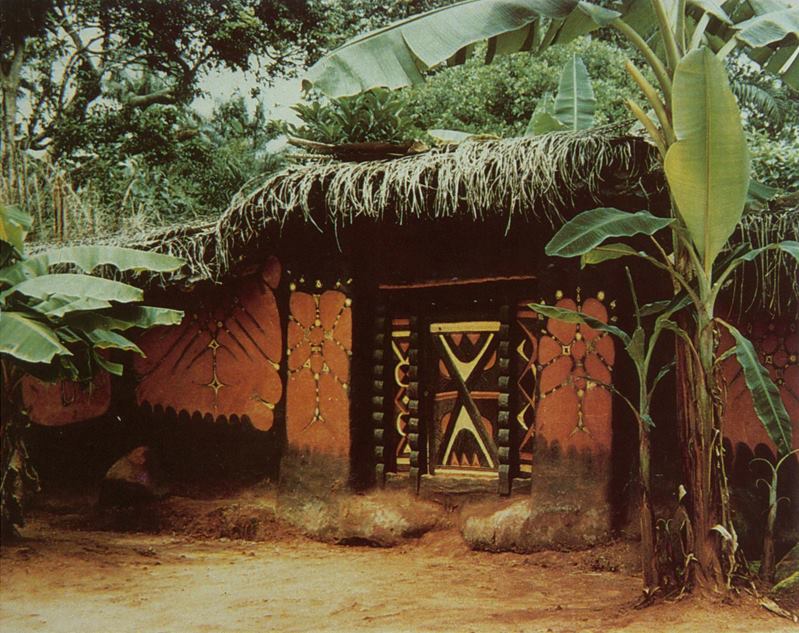
Shared under a Creative Commons Attribution-NonCommercial-ShareAlike 4.0 International (CC BY-NC-SA 4.0) license.
This image shows the entrance to the compound of traditional uli artist Mgbadunwa Okanumme. The walls are adorned with intricate Uli patterns, which are a form of Igbo art. The entrance features a thatched roof and is flanked by large banana plants. The wall decorations include geometric shapes, lines, and dots in white and black on a reddish-brown background, typical of the Uli style.
Cultural Significance of Uli
Uli art is deeply tied to the spiritual and social life of the Igbo people. It was often associated with festivals that honored the earth goddess Ala, and the designs were believed to carry protective and sacred qualities. Women who practiced Uli art were considered to have a special connection to the spiritual world, acting as intermediaries between the human and divine.
Uli also played a role in marking social status and achievement. For instance, people would often adorn themselves with Uli patterns when they attained a new title or achieved a significant life milestone, for example, childbirth or marriage. It was also common for elders and age-grade members to be decorated with Uli as a sign of their standing in the community.
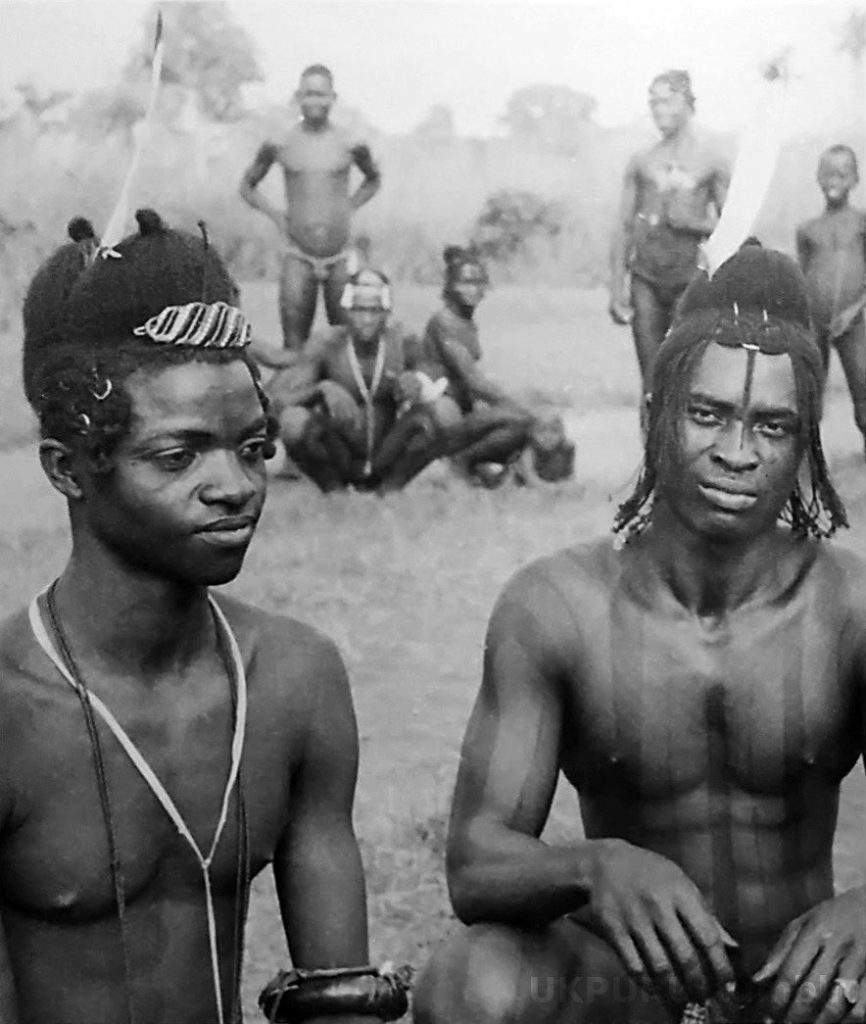
Shared under a Creative Commons Attribution-NonCommercial-ShareAlike 4.0 International (CC BY-NC-SA 4.0) license.
This black and white photograph depicts several young men from the Ogbolo age-grade. Their bodies are adorned with Uli body art, and they have distinctive hairstyles. This image provides a historical snapshot of the traditions of our people as documented by K.C. Murray in 1939.
The Decline and Revival of Uli Art
The popularity of Uli art began to decline during the colonial era. As Western forms of education and Christianity spread across southeastern Nigeria, many traditional practices, including Uli, were suppressed or discouraged. Christian missionaries often viewed Uli as too closely associated with traditional Igbo religion and practices, which they sought to replace with Christian teachings. Consequently, women were discouraged from practicing Uli in its traditional forms, although some were encouraged to continue using Uli motifs in other media.
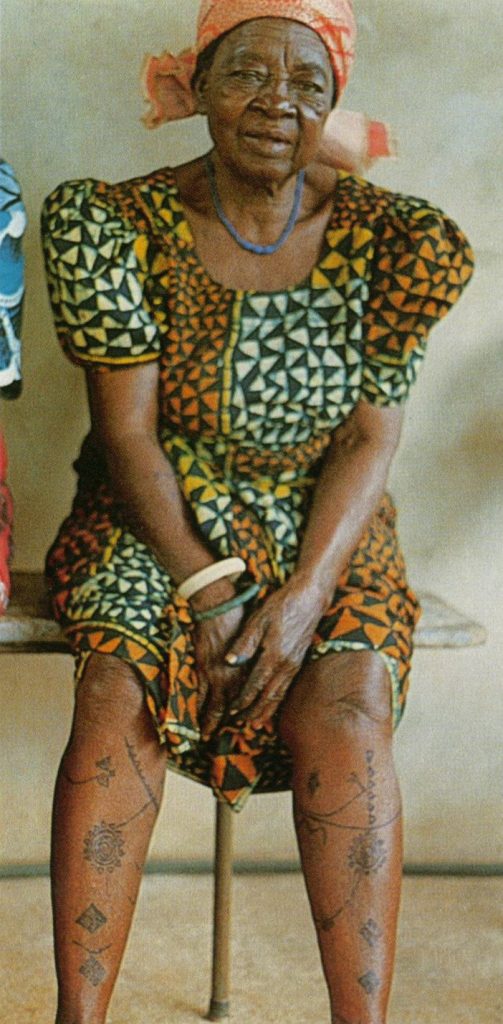
Shared under a Creative Commons Attribution-NonCommercial-ShareAlike 4.0 International (CC BY-NC-SA 4.0) license.
This image depicts an Earth Shrine (Ala) painter seated with her legs adorned with intricate Uli body art. Anthropologist Simon Ottenberg had noted that most traditional Uli artists today are senior women, as younger generations show less interest in this art form. Historically, Uli designs covered almost everyone’s body, reflecting its cultural and spiritual significance.
Despite these pressures, Uli persisted in some rural areas, maintained by older women who passed the tradition down to their daughters. The resilience of these women ensured that Uli did not disappear entirely.
In the 1970s and 80s, there was a renewed interest in Uli art, particularly among Nigerian artists and intellectuals who sought to reclaim their cultural heritage. This revival was spearheaded by the Nsukka School of artists at the University of Nigeria, Nsukka. Artists like Uche Okeke and Obiora Udechukwu adapted Uli motifs into modern art forms, including painting, sculpture, and textile design. Their work played a crucial role in revitalizing Uli as a contemporary art form, ensuring its relevance in the modern world.
The Nsukka artists’ efforts were not just about preserving Uli but also about innovating and integrating it into new artistic expressions. They merged traditional Uli motifs with contemporary styles and techniques, creating a unique fusion that resonated both locally and internationally.
Conclusion
Uli remains one of the most vibrant symbols of Igbo culture and creativity. Though it has evolved over the centuries, with contemporary artists adopting its motifs for new mediums, the essence of Uli as a form of expression and identity persists. As more efforts are made to preserve and revitalize this traditional art form, Uli continues to inspire new generations of artists, both in Nigeria and beyond.
References
The Nsukka Artists and Nigerian Contemporary Art. By Simon Ottenberg. Seattle: University of Washington Press, 2002.
The New Nsukka Art School: Between Continuity and Change
Uli: art and archive – [Re:]Entanglements
Discover more from Igbo Archives
Subscribe to get the latest posts sent to your email.

